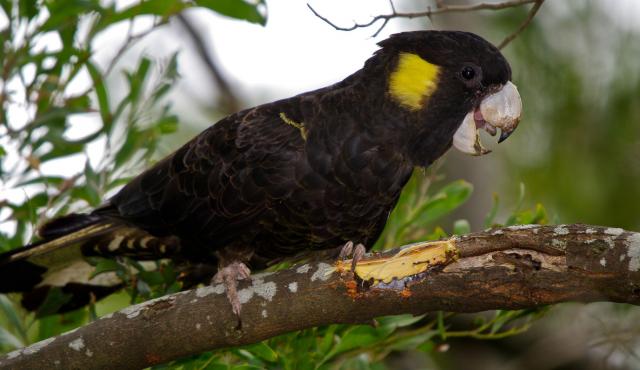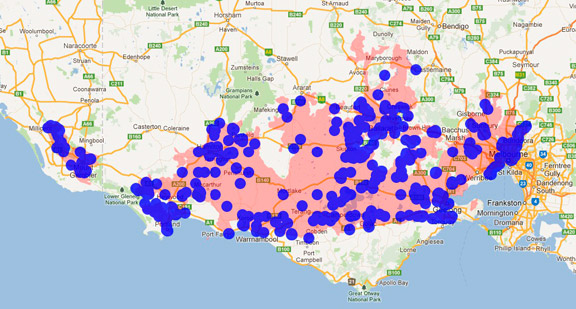A range of teacher professional learning programs will be developed to accompany the Biodiversity of the Western Volcanic Plains online outreach...


Yellow-tailed Black Cockatoo
Calyptorhynchus funereus
Breeds November-February. This species has a long breeding season. Both sexes construct a nest in a large tree hollow. The clutch size is usually 2 and the female incubates the eggs while the male supplies food. Usually only one chick survives which both parents care for. Time in the nest is around 168 days. Generally a nomadic species, migrating locally depending on food availability.
| Details | Description |
| Type | Bird |
| Group | Cockatoo |
| Other Common Names | Black Cockatoo |
| Identifying Characteristics | |
| Distinctive Markings | Striking yellow tail panels. Females have a larger yellow cheek patch than the males, pale grey eye-ring and a white upper beak. Males have a pink eye-ring and a grey-black upper beak. |
| Diet | Omnivore. Seeds of native trees including Banksia, Eucalypt, Hakea and Xanthorrhoea species. Also feeds on pine cones, seeds from ground plants and wood-boring insects. |
| Habitat | Favours eucalypt woodlands and pine plantations. Found in coastal areas as well as inland and alpine areas. |
| Native Status | Native to Australia |
| Sounds | Drawn-out, distinctive "kee - ow". Screeches when alarmed. |
| Taxonomy | |
| Phylum | Chordata |
| Class | Aves |
| Order | Psittaciformes |
| Family | Cacatuidae |
| Genus | Calyptorhynchus |
| Species | funereus |

Distribution maps indicate current and historic locations where species have been sighted.
Source: Atlas of Living Australia
| Conservation Status | |
| DEPI Advisory List | Not listed |
| FFG Act | Not listed |
| EPBC Act | Not listed |
The conservation status of species is listed within Victoria and Australia.
The Department of Environment and Primary Industry (DEPI) Advisory List consists of non-statutory advisory lists of rare or threatened flora and fauna within Victoria.
The Flora and Fauna Guarantee Act 1988 (FFG Act) lists threatened species in Victoria. Under the Act, an Action Statement is produced for each listed species.
The Environment Protection and Biodiversity Conservation Act 1999 (EPBC Act) is the Australian Government’s key piece of environmental legislation, listing nationally threatened native species and ecological communities.



